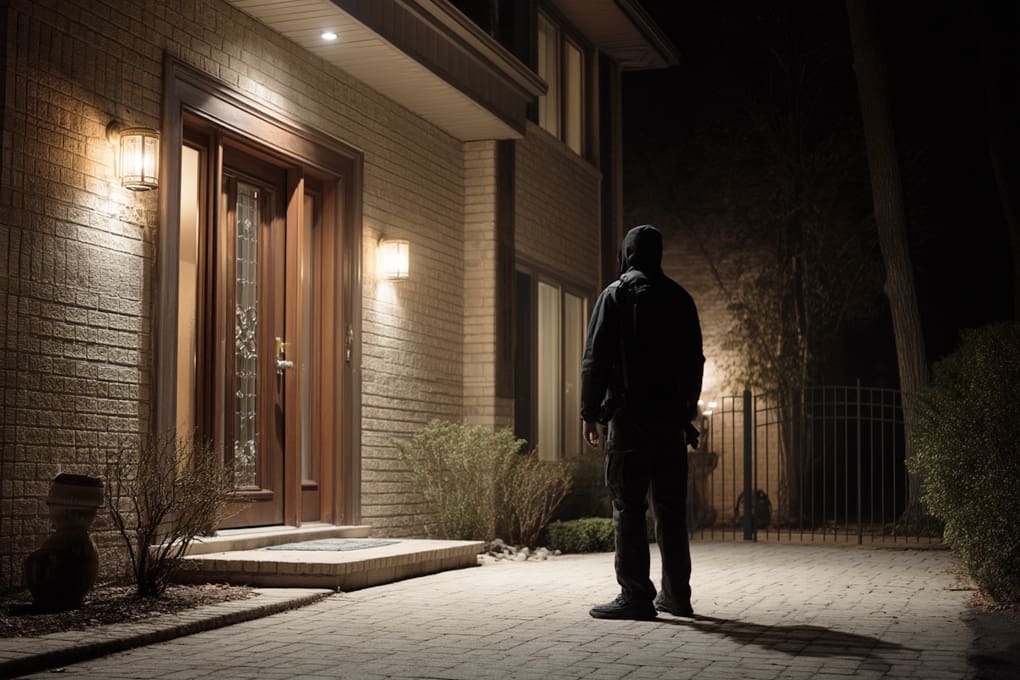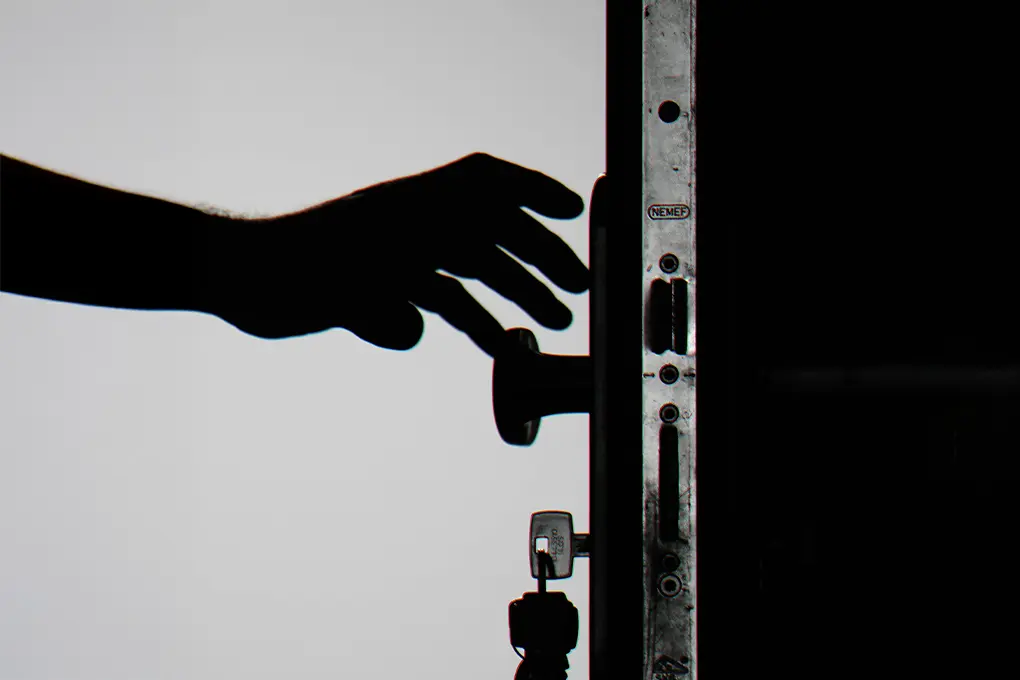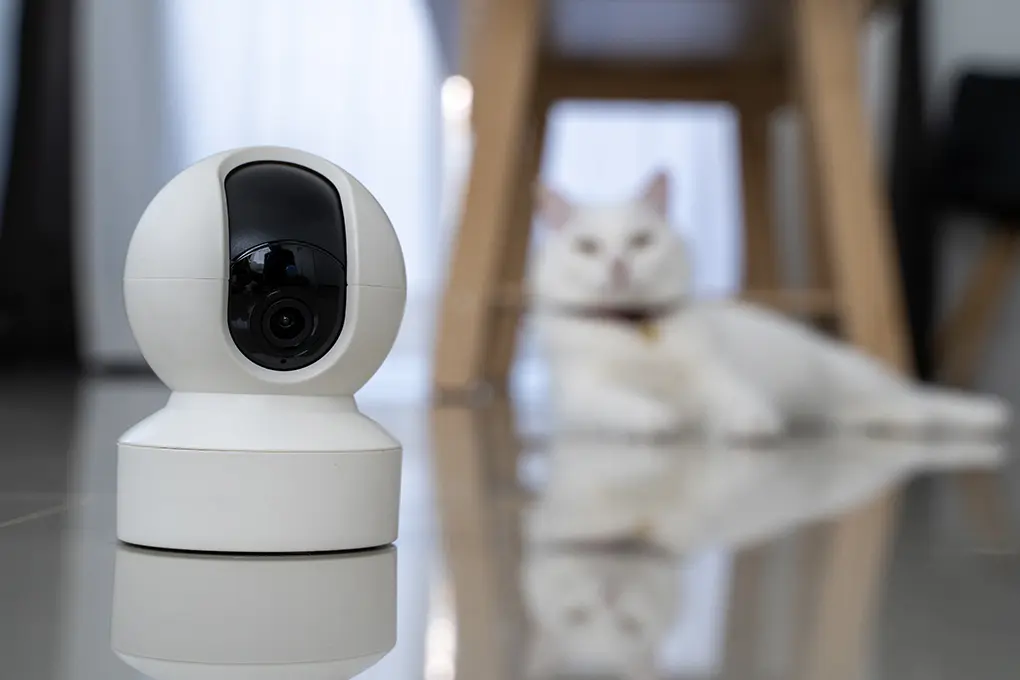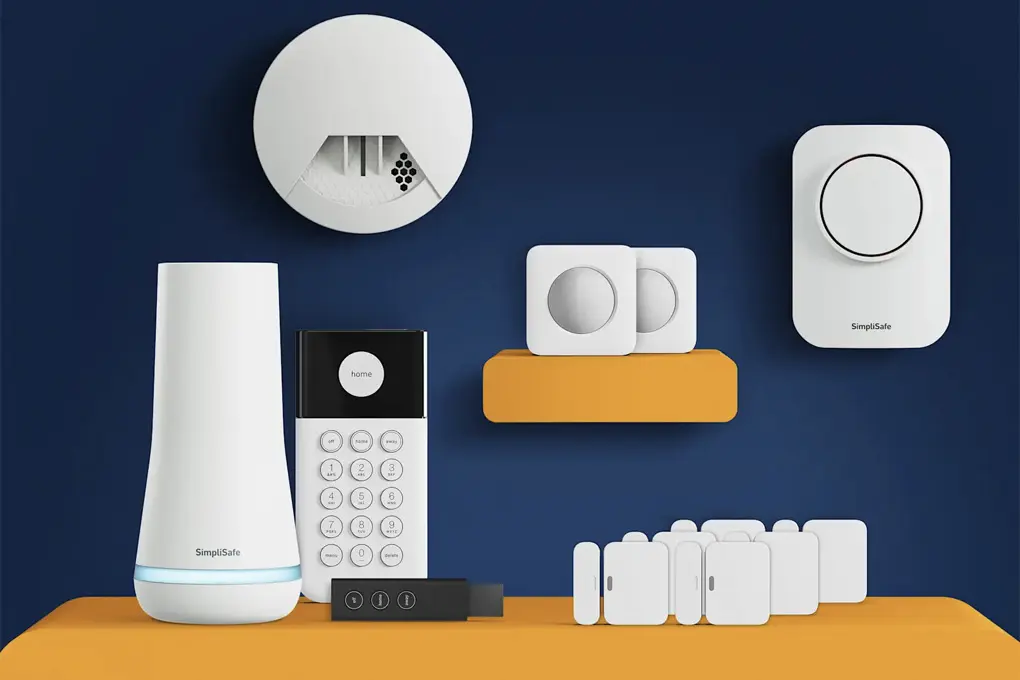When it comes to protecting your home, knowing how burglars think gives you a significant advantage. Contrary to popular belief, most home break-ins aren’t random acts of opportunity but calculated decisions based on specific factors that signal vulnerability.
According to the FBI, nearly 63% of all burglaries are residential in nature, underscoring the need for better home security measures, with burglary being one of the most common property crimes.
Understanding this selection process is the first step toward creating effective defenses that make your home less appealing to potential intruders.
Recent crime statistics and interviews with convicted burglars reveal patterns that every homeowner should understand.
The insights from these sources provide a rare glimpse into criminal decision-making. This is information that can help transform your home from a potential target into a property that burglars actively avoid.
Let’s find out how burglars pick houses.
Contents
- Key Takeaways
- The First 60 Seconds: How Burglars Assess Your Home
- Surprising Signals That Flag Your Home as Vulnerable
- Prime Targeting Times You Might Not Expect
- Entry Points: Where Burglars Actually Break In
- What Actually Deters Burglars (According to Burglars)
- Technology That Makes Criminals Think Twice
- Creating a Comprehensive Home Defense Plan
- When to Invest in Professional Security Solutions
- Conclusion: Building Security Through Awareness
- Frequently Asked Questions
Key Takeaways
- Burglars evaluate homes quickly based on visibility, signs of occupancy, and security systems.
- Social media activity and unattended mail are among the biggest signals of homeowner absence.
- Most break-ins occur during the day, especially on Fridays and during summer months.
- The front door is the most common entry point, followed by ground-floor windows and back doors.
- Security cameras, alarm systems, and barking dogs are the top deterrents cited by former burglars.
- Smart home technology and layered security setups greatly reduce a home’s appeal to intruders.
- Neighborhood awareness and consistent daily habits are just as important as physical security devices.
The First 60 Seconds: How Burglars Assess Your Home
When a burglar approaches a neighborhood, they typically make an initial assessment of your property in under one minute. During this brief window, they look for specific indicators that suggest your home is an easy target or contains valuable items worth the risk.
This pre-crime assessment focuses on visible security measures, signs of occupancy, and potential entry points. Most importantly, burglars are looking for the path of least resistance, these being homes that offer the highest reward for the lowest risk.
Former burglars interviewed by security researchers consistently mention that their decision to target a specific home is rarely impulsive. Instead, they evaluate multiple factors that homeowners often overlook:
- Visibility from the street and neighboring houses
- Evidence of security systems or cameras
- Signs that indicate whether the home is currently occupied
- Accessible entry points like unlocked windows or doors
- Overgrown landscaping that provides cover
According to a study published in the Journal of Quantitative Criminology, burglars prefer homes in residential areas with low foot and vehicle traffic, as well as detached homes, as they generally have the lowest risk for these criminals.
Furthermore, according to a study conducted on 400 convicted burglars, 83% said they look for alarm systems when casing a home for robbery, with up to 60% saying they avoid homes with alarm systems altogether.
A former burglar who now works as a security consultant noted, “I wasn’t looking for mansions necessarily, I was looking for homes where I could get in and out quickly without being noticed. The houses that showed signs of regular patterns and predictable absences were my primary targets.”
Surprising Signals That Flag Your Home as Vulnerable
Beyond obvious security weaknesses, burglars notice subtle indicators that many homeowners accidentally broadcast. These signals can make your home stand out as an attractive target even if you’ve invested in basic security measures.
Social media activity has become a significant factor in home targeting. According to Credit Sesame, 78% of convicted burglars admitted to using social media to identify when homeowners were away from home.
These are concerning statistics, especially seeing as up to 15% of Americans use social media to report leaving their homes, and 35% use social media to post updates about their current location.
Vacation photos, location check-ins, and public posts about travel plans create a digital roadmap for potential intruders.
Mail and package accumulation remains one of the most reliable indicators of an empty home. Despite the rise of digital communication, physical mail still serves as a clear signal to burglars that no one has been home for days. Similarly, unattended packages sitting on porches not only advertise potentially valuable items but also suggest absence.
The exterior condition of your property communicates volumes about your security habits. Homes with these characteristics often rank higher on a burglar’s target list:
- Newspapers piled up in the driveway
- Uncut grass or unshoveled snow
- Dark houses with no lights on for extended periods
- Trash cans left out long after collection day
- Holiday decorations still up well past the season
A former burglar interviewed by a major home security company revealed, “I always looked for homes where it seemed like the owners were living on autopilot, including predictable behaviors, same lights always on or off, and visible signs they hadn’t been around recently.”
Prime Targeting Times You Might Not Expect
Contrary to the common belief that most burglaries happen at night, statistics from the FBI’s Uniform Crime Report and ADT show that 65% of residential burglaries occur between 10 AM and 3 PM when most people are at work or school. These daylight hours provide better visibility for burglars to work and reduce the chances of confronting homeowners.
However, seasonal patterns also influence burglary rates. Summer months see a 10% increase in break-ins compared to winter, partly due to more people traveling and leaving homes unattended. December also sees a spike around the holidays when homes often contain valuable gifts and homeowners maintain predictable schedules.
The day of the week matters too. Security data shows that Friday has consistently been the most common day for home burglaries, as many families begin weekend trips while leaving obvious signs of absence. Monday follows closely, as burglars take advantage of patterns they observed over the weekend.
Specific timing patterns have emerged in recent years as homeowner behaviors have shifted:
- School drop-off and pick-up times (8 to 9 AM and 2 to 4 PM)
- Lunch hours (12 to 1 PM) when many homes are briefly empty
- Early evening (6 to 7 PM) when many families are out for dinner or activities
- Regular community events that empty neighborhoods
“Burglars are looking for patterns,” explains security specialist and former law enforcement officer James Kendrick. “They’re studying when lights turn on and off, when garage doors open and close, and other indicators of your routine. Breaking these patterns—or at least making them less obvious—is a simple but effective deterrent.”
Entry Points: Where Burglars Actually Break In
Understanding how burglars gain access to homes can help focus your security efforts on the most vulnerable areas. According to the Department of Justice, 34% of burglars enter through the front door, making it the most common entry point, a surprising statistic given that most homeowners assume the back of the house is more vulnerable.
The International Association of Certified Home Inspectors reports that first-floor windows account for 23% of break-in entry points, while back doors represent another 22%. Sliding glass doors, despite their perceived vulnerability, account for only 9% of entries, likely because many homeowners have already taken steps to secure these obvious weak points.
Less obvious entry points that homeowners frequently overlook include:
- Ground floor windows hidden by landscaping
- Doors from attached garages into the home
- Basement windows or entrances
- Second-floor windows accessible from porches or nearby trees
- Pet doors large enough for a person to crawl through
Former burglars consistently report testing doors first by simply turning doorknobs to check if they’re unlocked.
Surprisingly, this basic approach is successful more often than most homeowners would expect. A recent survey conducted on 86 convicted burglars revealed that the vast majority check for unlocked doors and windows, as these offer the easiest entry points.
What Actually Deters Burglars (According to Burglars)
When researchers interview convicted burglars about what deterred them from targeting specific homes, their answers provide valuable insights for homeowners looking to strengthen their security. Understanding these effective deterrents can help prioritize your home protection strategy.
Visible Security Systems
Visible security systems with cameras consistently rank as the top deterrent.
A comprehensive study by the University of North Carolina at Charlotte found that 60% of burglars would seek an alternative target if they spotted visible security systems, while 83% would specifically check for alarm systems and other security measures before attempting entry.
The mere presence of these systems, even before they’re triggered, significantly reduces the likelihood of your home being targeted.
Dogs
The presence of dogs represents another powerful deterrent. According to interviews with former burglars, homes with dogs of any size are typically avoided due to the noise they create and potential for attention. Even small dogs’ barking can draw unwanted attention to burglary attempts.
According to Nicolo Pinchak, author of a study that investigated the crime-deterring effects of dogs noted that “People walking their dogs are essentially patrolling their neighborhoods. They see when things are not right, and when there are suspect outsiders in the area. It can be a crime deterrent.”
Also, homes with dogs are shown to have a lower property crime rate. According to a study in Criminal Justice Studies, “households with licensed dogs enjoyed property crime rates 1.71 percentage points lower than households without licensed dogs.”, illustrating how dogs act as deterrents. The National Police Association also confirms that homes with dogs are less likely to be victims of property crime.
Neighborhood Dynamics
Neighborhood dynamics also play a crucial role in burglar decision-making. Homes in areas with these characteristics tend to experience fewer break-ins:
- Active neighborhood watch programs
- Neighbors who are visibly present and attentive
- Good visibility between houses with minimal hiding spots
- Rapid police response times to emergency calls
- Community-wide security measures like shared camera systems
Technology That Makes Criminals Think Twice

Modern security technology has evolved significantly beyond basic alarm systems, creating multiple layers of protection that make would-be intruders reconsider their targets. The most effective systems combine visibility, connectivity, and immediate response capabilities.
Video Doorbells
Video doorbells have emerged as one of the most effective and accessible deterrents. These devices provide both a visible security presence and actionable evidence if an intrusion occurs. A 2024 study by the Electronic Security Association found that homes with video doorbells experienced 53% fewer attempted break-ins compared to similar homes without them.
Smart Lighting
Smart lighting systems that create the appearance of occupancy represent another technological advance that specifically addresses burglar targeting methods. Lights that turn on and off in patterns that mimic human activity, rather than obvious timers, confuse potential intruders about whether a home is truly empty.
Connected Security Systems
Connected security systems with multiple components create comprehensive protection that addresses various burglar tactics:
- Motion-activated lights that eliminate hiding spots
- Smart locks that can’t be picked using traditional methods
- Glass break sensors that detect forced entry through windows
- Mobile notifications that alert homeowners to suspicious activity
- Security cameras with night vision and wide viewing angles
Remember that a good security system also reduces homeowner’s insurance costs.
“What works isn’t just having one security measure, but layering different types of protection,” explains home security expert Michael Chen. “A camera might deter most burglars, but adding motion lights, secure locks, and window sensors creates multiple obstacles that make your home simply not worth the effort compared to less-protected properties nearby.”
Creating a Comprehensive Home Defense Plan
Effectively protecting your home requires more than a single tool or device. A well-rounded home defense strategy involves assessing vulnerabilities, establishing daily security routines, and implementing physical deterrents. By understanding how intruders evaluate potential targets, you can create a defense plan that significantly reduces your risk.
Conduct a Security Assessment from an Intruder’s Perspective
Begin your home defense plan with a walk-through of your property. Look at your home the way a burglar would. Take note of the following:
- Windows without locks or with poor visibility from the street
- Landscaping features such as tall shrubs or privacy fences that could hide someone from view
- Areas lacking lighting, particularly near entrances or around the perimeter
- Sheds, garages, or side gates that may be easy to access and out of sight
Take photos or create a checklist as you go to document what needs to be addressed. The goal is to identify weak spots before someone else does.
Build Strong Daily Security Habits
Technology alone won’t secure your home. Daily routines play a major role in deterring opportunistic crimes. According to the National Crime Prevention Council, these everyday practices help minimize risk:
- Always lock doors and windows, even when you’re home or leaving briefly
- Keep garage doors shut unless you’re actively using them
- Never hide spare keys outside; instead, leave one with a trusted neighbor
- Use timers to maintain the appearance of occupancy when traveling
- Avoid posting real-time updates about your location or trips on social media
These habits, when practiced consistently, signal that your home is well-managed and not an easy target.
Organize a Neighborhood Security Network
Strength in numbers is one of the most reliable forms of passive security. A well-connected neighborhood is harder for criminals to target without being noticed.
Set up a simple communication system with your neighbors to report unusual activity. This can be a group text, shared chat app, or even regular face-to-face check-ins. Research from the Bureau of Justice Statistics shows that neighborhoods with active watch groups see up to 16% fewer property crimes than those without them.
You can also work together to:
- Coordinate lighting strategies for shared alleys and entrances
- Watch each other’s homes while away
- Pool funds for shared security cameras at community entrances
Reinforce with Physical and Electronic Defenses
Once habits and neighborhood communication are in place, support your strategy with physical improvements. This may include:
- Installing high-quality deadbolts and strike plates on exterior doors
- Using motion-sensor lights to eliminate dark zones
- Mounting visible security cameras around entrances and walkways
- Posting security signage (even fake cameras and signs can deter casual thieves)
- Securing sliding doors with rods or pin locks
Plan for Long-Term Security
Review your security plan twice per year or after major changes such as renovations, new neighbors, or a break-in nearby. Adjust routines as needed and make sure all household members are familiar with emergency procedures.
By combining personal habits, neighborhood support, and physical defenses, your home defense plan becomes a dynamic, multi-layered system. Most importantly, this approach gives you control over your environment without relying entirely on any single tactic.
“The most secure homes combine technology, good habits, and community awareness,” says former police officer and security consultant Robert Williams. “No single measure is foolproof, but layering these approaches creates a property that most burglars will simply pass by in favor of easier targets.”
When to Invest in Professional Security Solutions
Although many home security upgrades can be done on your own, there are specific circumstances where professional input becomes essential. Knowing when to involve experts can strengthen your overall protection plan and offer greater peace of mind.
When a Professional Security Assessment Makes Sense
Hiring a security professional to evaluate your home can uncover risks you may not notice. These specialists are trained to spot subtle vulnerabilities and consider factors such as sightlines, access points, and environmental concealment.
Situations that benefit from professional assessments include:
- New home purchases where security baselines haven’t been established
- Recent renovations or layout changes that may alter access points
- Previous break-ins or attempted intrusions that indicate ongoing risk
Why Monitored Security Systems Add Critical Protection
While DIY alarms and cameras can deter crime, monitored systems take things further by providing active response. These systems are connected to central stations where trained staff can alert authorities if alarms are triggered.
Monitored solutions are especially beneficial if:
- You own valuable property such as artwork, collectibles, or expensive equipment
- You frequently travel for work or vacation, leaving the home unoccupied
- Your area has experienced an uptick in burglaries or attempted intrusions
- Local emergency response times are slower than average, increasing the need for early detection
- You have public visibility or a profession that increases your personal security risk
With monitored systems, response can happen even when you’re asleep, away, or unable to check your phone. This provides an extra layer of assurance that standalone alarms simply cannot replicate.
Additional Services to Consider
Professionally installed systems often come with added benefits such as:
- Regular maintenance and system updates
- Integration with smart home features like lighting and thermostats
- Panic buttons, glass-break detectors, and smoke alarm integration
- Insurance discounts that may help offset the monthly cost
Investing in professional security services makes the most sense when your home, lifestyle, or assets require a higher level of protection. When used strategically, these services can fill the gaps that personal vigilance and DIY devices may leave behind.
“The monitoring aspect is what transforms basic security equipment into a comprehensive protection system,” explains security industry analyst Jennifer Park. “When an alarm triggers, having professionals who can immediately assess the situation and contact appropriate authorities creates a response speed that self-managed systems simply can’t match.”
Conclusion: Building Security Through Awareness
Understanding how burglars actually select targets empowers homeowners to take meaningful steps toward protecting their properties. By addressing the specific factors that make homes attractive to intruders, you can significantly reduce your risk of experiencing a break-in.
The most effective home security doesn’t rely solely on expensive equipment but combines technology with awareness, good habits, and community engagement. Implementing even some of the measures discussed in this article can make your home substantially less appealing to potential intruders.
Remember that home security is not a one-time installation but an ongoing process of assessment, habit formation, and adaptation to new threats and technologies. By staying informed about criminal tactics and regularly evaluating your home’s vulnerabilities, you create a dynamic defense system that evolves alongside changing risks.
Want peace of mind for your home? Browse Batten’s expert-recommended home security tools, from smart cameras to alarm systems, and start protecting what matters most.
Frequently Asked Questions
How Do Burglars Typically Monitor a Home Before Striking?
They often observe routines like work hours, light usage, and mail buildup over several days to determine when the home is unoccupied.
What Is the Most Overlooked Entry Point in Home Break-Ins?
Side doors connecting garages to homes are frequently unsecured and out of sight, making them common entry points burglars target. Having security cameras for garages and other such areas is therefore essential.
Can Fake Security Signs or Cameras Actually Deter Burglars?
Yes, visible deterrents like fake cameras or alarm signs can make burglars think twice, especially when combined with other real security measures.
How Important Is Landscaping in Home Security?
Very. Overgrown bushes and untrimmed trees can provide cover for burglars. Keeping clear sightlines improves both visibility and deterrence.
Do Most Burglars Work Alone or in Groups?
Most residential burglaries are committed by individuals acting alone, but some cases—particularly those targeting high-value homes—involve small teams.
What State Do Most Burglaries Occur In?
According to recent studies, New Mexico has the highest burglary rate, with 604 incidents per 100,000 residents.
Sources
- Through the eyes of a burglar: Study provides insights on habits and motivations, importance of security | ScienceDaily
- “Location, Location, Location”: Effects of Neighborhood and House Attributes on Burglars’ Target Selection | Journal of Quantitative Criminology
- Blog | Credit Sesame
- Why Oversharing on Social Media Might be Overrated | Intact Insurance
- Social Media Status Updates Tip Off Burglars, Study Shows
- Expert Decision Making in Burglars | The British Journal of Criminology | Oxford Academic
- When Do Most Burglaries Occur? Everything You Should Know
- Why Fridays Are the Most Popular Day for Burglars
- FBI — Burglary
- Burglary Statistics in 2025 | The Zebra
- Burglar-Resistant Homes – InterNACHI®
- Criminologist Reveals Home Invasion Tactics: Here Are His Tips To Stop Burglars – CNET
- Home Security Statistics 2025 | ConsumerAffairs®
- Can Dogs Take Bite Out of Neighborhood Crime? | Department of Statistics and Data Sciences
- More dogs in the neighborhood often means less crime
- (PDF) Porch pirates: examining unattended package theft through crime script analysis
- Canines in Communities Have a Direct Effect on Crime Reduction | National Police Association
- Locking-your-home-reva-1-pdf.pdf
- U.S. Home Burglary Rates 2024 Survey: New Mexico Ranks Highest, Maine is Lowest | NESA
- Crime in the U.S.: Key questions answered | Pew Research Center




